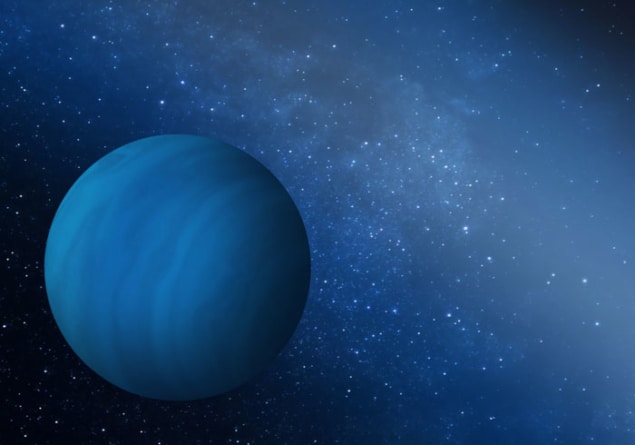
A fifth giant planet was kicked out of the early solar system, according to computer simulations by a US-based planetary scientist. The sacrifice of this gas giant paved the way for the stable configuration of planets seen today, says David Nesvorný, who believes that the expulsion prevented Jupiter from migrating inwards and scattering the Earth and its fellow inner planets.
The Nice model (named after the city in France where it was devised) is currently the best explanation of why the solar system looks the way it does today. It describes how early gravitational interactions between the large outer planets and planetesimals – smaller bodies that are the building blocks of planets – would have scattered the latter throughout the solar system. This accounts for the period known as the “late heavy bombardment”, the scars of which bodies such as the Moon still bear today. It also helps explain the structure of the asteroid and Kuiper belts. However, for the model to work, the planets must have started out much closer together than their present-day locations.
Working at the Southwest Research Institute in Colorado, Nesvorný set out to explain how the planets got to their current positions. “I wanted to put everything together into a single model that explains why our solar system looks the way it does,” he told physicsworld.com. To do this, he performed computer simulations that varied the starting positions of the four outer planets: the gas giants Jupiter, Saturn, Uranus and Neptune. The planets were also given varying eccentricities – the amount their orbits deviate from being perfect circles – and different orbital inclinations. A thousand equally sized planetesimal bodies were also added. He then let the gravitational dance play out.
Dysfunctional giants
What Nesvorný found was surprising. “If you use four planets, in the majority of cases the solar system loses one,” he explains. With the presence of four outer planets today, this obviously did not happen. He altered the model. “I added in more mass to the planetesimals, which could act as a gravitational glue to keep the planet [from being ejected],” he says. It did not work: in 120 four-planet simulations only three of them yielded a familiar-looking solar system. “I kept running into problems. I tried all sorts of initial conditions but still things didn’t work,” he adds.
Instead Nesvorný was forced to consider the presence of a fifth planet. “If you had four planets and the system was losing one, I thought of trying five planets to see if one was lost, leaving four,” he explains. He then ran thousands of simulations with five planets to see what happened. By varying the total mass of the planetesimals between 10–100 Earth masses, the models presented a familiar-looking solar system at least 23% of the time – a 10-fold increase on early solar systems containing only four outer planets. “In all likelihood the outer solar system had more than four planets,” he says. “One got kicked out.”
This five-planet scenario also helps to explain why the Earth is still here. If Jupiter had migrated inwards, as some Jupiter-like planets have done in other solar systems, it could have hit a “danger zone” where its gravitational influence disturbed the stability of the inner planets. “Not only does Jupiter eject the fifth planet, but the interaction causes it to jump away from the danger zone,” Nesvorný explains.
Solar-system specialist Craig Agnor of Queen Mary, University of London says the simulations are “excellent work” and a “possible missing piece” linking the Nice model to today’s planetary configuration. “Had someone suggested this 25 years ago, it would have been somewhat outside the mainstream,” he adds. “However, today there are a handful of free-floating planets that appear to have been ejected from their parent stars.”
However, Agnor also warns that it “isn’t a solved problem”. “This is the beginning of the exploration of the idea that our planetary system was once unstable. How the planets formed and how that instability developed is something that really needs further study,” he explains.
The work is described in Astrophysical Journal Letters.



